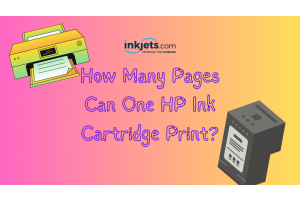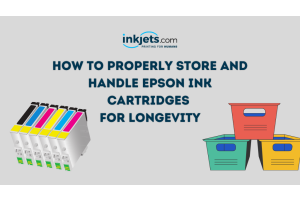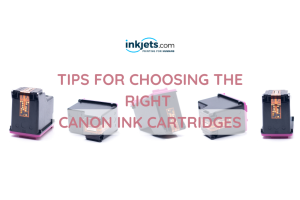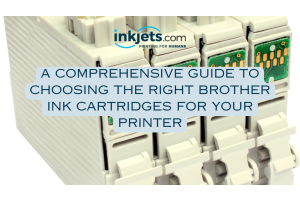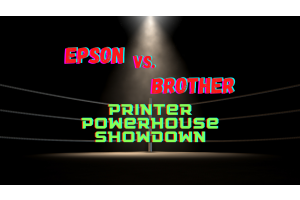
Article last updated March 8, 2023
Choosing the right printer can be difficult given the market's abundance of options. Many people end up purchasing devices that do not meet their needs. This post will go over the top five mistakes that people make when purchasing printers.
MISTAKE #1: FAILING TO BUY A PRINTER WITH HIGH-YIELD CARTRIDGES.
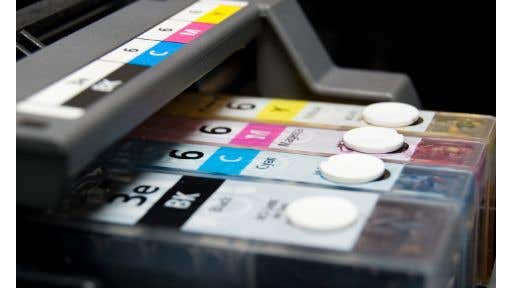
Unless you only need to print a few dozen pages per month, consider purchasing a printer that uses high-yield ink or toner cartridges.
First and foremost, you do not want to be purchasing replacement printer cartridges on a regular basis.
Second, high-capacity ink and toner cartridges for HP printers, for example, ensure a lower cost-per-print.
Printer manufacturers frequently sell low-cost entry-level printers. These printers only accept standard cartridges. With such printers, you may end up spending more on replacement cartridges than the device itself in just one year.
As a result, even if a printer comes with standard cartridges, having the option to use high-yield cartridges when needed is always preferable.
Using high-yield cartridges is one of the most effective ways to cut printing costs.
MISTAKE #2: INABILITY TO DECIDE WHICH FEATURE IS THE MOST IMPORTANT

Many people end up paying for features they do not require or purchasing printers that lack the features they require.
The following are some of the most important printer specifications to match your current needs:
1. Print Speed: Page speed, measured in pages-per-minute (ppm), is generally important when purchasing a printer for office use.
2. Duplex Printing: If you need to print on both sides of a piece of paper, the duplex printing feature can save you a significant amount of time and effort.
3. ADF (Automatic Document Feeder): This feature allows you to print, copy, scan, and fax multi-page documents without having to manually replace each sheet, which saves time.
4. Different printers can handle different sizes of paper. A printer that can only handle A4 sheets, for example, will be useless if you need to print legal documents.
5. A printer may have buttons, a touchscreen, or an LCD screen to assist users in configuring it.
6. Other features to consider include paper handling capacity (input and output trays), as well as the availability of a touchscreen or LCD screen for easy navigation.
MISTAKE #3: FAILURE TO CONSIDER CONNECTIVITY OPTIONS

Typically, a printer will support three or four different connectivity options.
Wi-Fi, Wi-Fi Direct, Ethernet, USB 2.0, mobile printing, cloud printing, NFC (Near Field Connectivity), and other technologies may be included.
You must select a printer that includes the connectivity options that you require.
You don't want to place an online order only to discover that the printer lacks an Ethernet port or does not support wireless printing.
Consider how many people will use a printer at home or in the office and how they will print, copy, scan, or fax with ease.
MISTAKE #4: FAILURE TO CONSIDER THE TYPE OF PRINT JOB

The best printers for professional use may not be appropriate for a student printing school assignments or a business owner printing invoices, labels, and reports in the workplace.
Different printers are created to meet a specific set of printing requirements.
A printer's unique selling proposition could include:
1. Printing graphics that are reasonably appealing
2. Archival-quality photo printing
3. Low-cost monochrome document printing
4. Printing in large sizes
5. High-volume, low-cost printing
One printer may be better suited to producing stunning photographs, while another may be better suited to printing razor-sharp text. One printer may be excellent at handling a wide range of paper sizes, while another may be the best in class at handling a specific type of print job. As a result, advice on how to select the right printer for a small business or a home user will differ.
MISTAKE #5: FORGETTING ABOUT THE COST OF PRINTER CONSUMABLES

Replacement ink cartridges for inkjet printers and toner cartridges for laser printers are required.
You may need to replace the print head (in an inkjet printer) or the drum unit (in a laser printer) after using it for a while if these components are not integrated with cartridges.
When you compare printers solely on price, you risk purchasing a device that will require more expensive consumables.
WORDS TO REMEMBER
In order to make an informed purchase decision, evaluate your current and future needs. There is no such thing as a one-size-fits-all printer on the market.
If you're not sure whether you should get an inkjet or laser printer, read our guide on the subject.
If you're unsure whether you should replace an old printer with a new one, check out our article titled '5 Signs You Need A New Printer.'
Finally, to save money on printing, avoid expensive OEM cartridges in favor of low-cost, high-quality cartridges.



